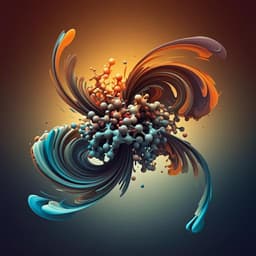
Chemistry
Inferring experimental procedures from text-based representations of chemical reactions
A. C. Vaucher, P. Schwaller, et al.
This groundbreaking research by Alain C. Vaucher, Philippe Schwaller, Joppe Geluykens, Vishnu H. Nair, Anna Iuliano, and Teodoro Laino unveils advanced data-driven models capable of predicting synthesis steps from chemical equations. With an impressive dataset of 693,517 entries and innovative models like Transformer and BART, over 50% of predicted sequences require no human intervention for execution.
~3 min • Beginner • English
Related Publications
Explore these studies to deepen your understanding of the subject.







